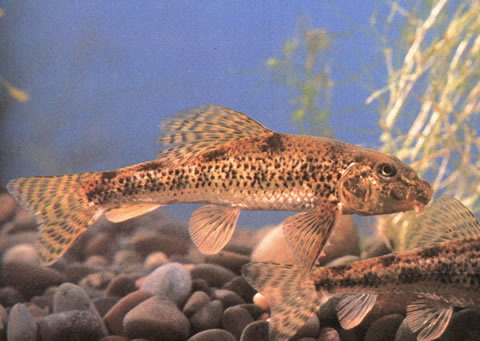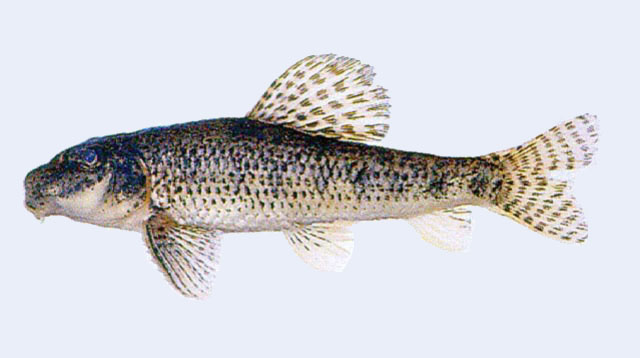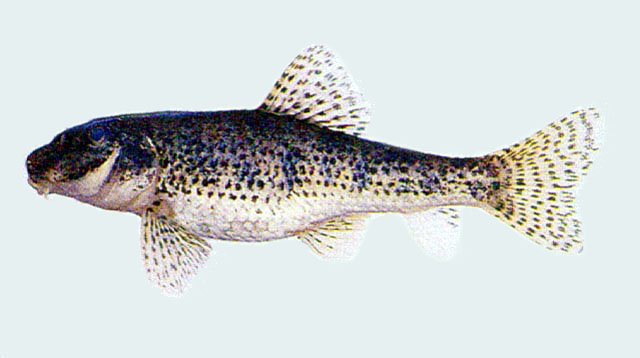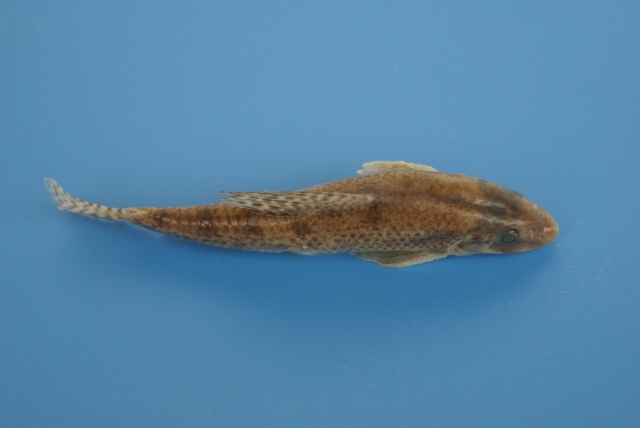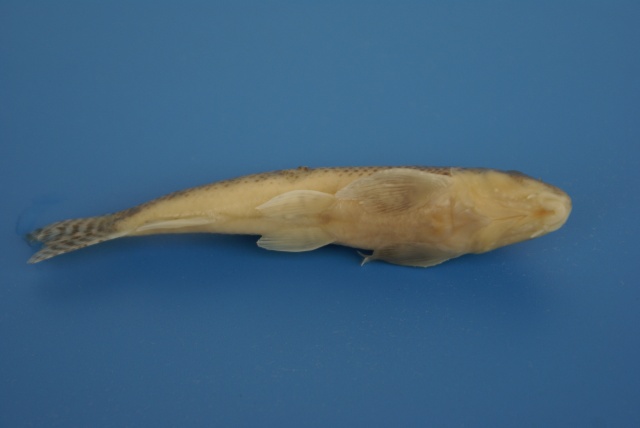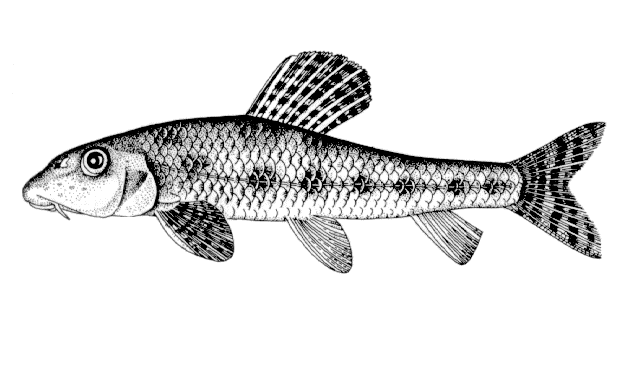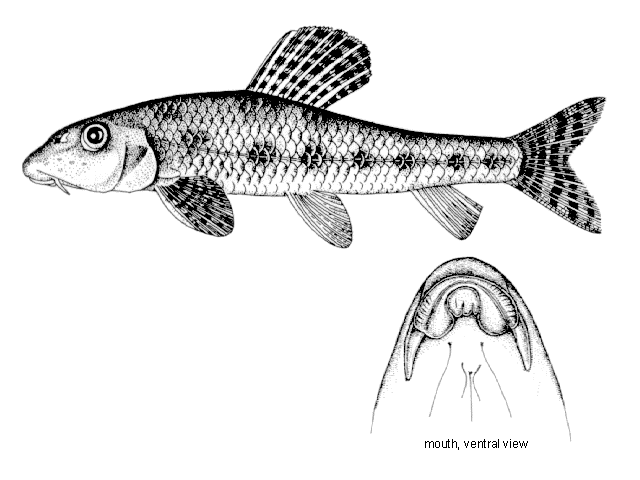Abbottina
rivularis
(Basilewsky,
1855)
Chinese false gudgeon
View all media / Upload your photos and videos
Expand all
Classification / Names
Teleostei (teleosts) > Cypriniformes (Carps) >
Gobionidae (Gudgeons)
Etymology: Abbottina: Named for James Francis Abbott, formerly a professor in the Japanese Military Academy at Etajima, who assisted Professors Jordan and Snyder in their work on Lake Biwa, Lake Yogb, Yodo River, and at Tsuruga and Misaki (D. Hollombe, pers.comm., 2014 November).
More on author:
Basilewsky.
Environment / milieu / depth range / climate zone / distribution range
Brackish; freshwater; benthopelagic; subtropical.
Distribution
Length at first maturity / Size / Weight / Age
Biology
Adults inhabit shallow zones of lentic rivers and lakes with sandy or muddy bottoms (Ref. 12819).
Life cycle and mating behavior
The male builds a nest 12-43 cm in diameter on the bottom of the river, at a depth of 8-34 cm, and broods over the spawn. 1,711 eggs were found in a single nest (Ref. 1441).
Main reference
Masuda, H., K. Amaoka, C. Araga, T. Uyeno and T. Yoshino 1984 The fishes of the Japanese Archipelago. Vol. 1. Tokai University Press, Tokyo, Japan. 437 p. (text). (Ref. 559)
IUCN Red List Status (Ref. 125652)
Least Concern (LC); date assessed: March 25 2020
CITES (Ref. 131153)
Not Evaluated
CMS (Ref. 116361)
Not Evaluated
Threat to humans
Harmless
More information
- Countries
- FAO areas
- Ecosystems
- Occurrences
- Introductions
- Stocks
- Ecology
- Diet
- Food items
- Food consumption
- Ration
- Common names
- Synonyms
- Metabolism
- Predators
- Ecotoxicology
- Reproduction
- Maturity
- Spawning
- Spawning aggregation
- Fecundity
- Eggs
- Egg development
- Age/Size
- Growth
- Length-weight
- Length-length
- Length-frequencies
- Morphometrics
- Morphology
- Larvae
- Larval dynamics
- Recruitment
- Abundance
- References
- Aquaculture
- Aquaculture profile
- Strains
- Genetics
- Allele frequencies
- Heritability
- Diseases
- Processing
- Mass conversion
- Vision
- Pictures
- Stamps, Coins Misc.
- Sounds
- Ciguatera
- Speed
- Swim. type
- Gill area
- Otoliths
- Brains
Estimates based on models
Phylogenetic diversity index (Ref. 82804): PD50 = 0.5312 [Uniqueness, from 0.5 = low to 2.0 = high].
Bayesian length-weight: a=0.00776 (0.00645 - 0.00935), b=3.14 (3.09 - 3.19), in cm total length, based on LWR estimates for this species (Ref. 93245).
Trophic level (Ref. 69278): 3.3 ±0.4 se; Based on size and trophs of closest relatives.
Generation time: 3.7 ( na - na) years. Estimated as median ln(3)/K based on 1 growth studies.
Resilience (Ref. 120179): Medium, minimum population doubling time 1.4 - 4.4 years (Preliminary K or Fecundity.).
Fishing vulnerability (Ref. 59153): Low to moderate vulnerability (33 of 100).
Price category (Ref. 80766): Unknown.
Nutrients (Ref. 124155): Calcium = 0 [0, 0] mg/100g; Iron = 0 [0, 0] mg/100g; Protein = 0 [0, 0] %; Omega3 = 0 [0, 0] g/100g; Selenium = 0 [0, 0] μg/100g; VitaminA = 0 [0, 0] μg/100g; Zinc = 0 [0, 0] mg/100g (wet weight);

